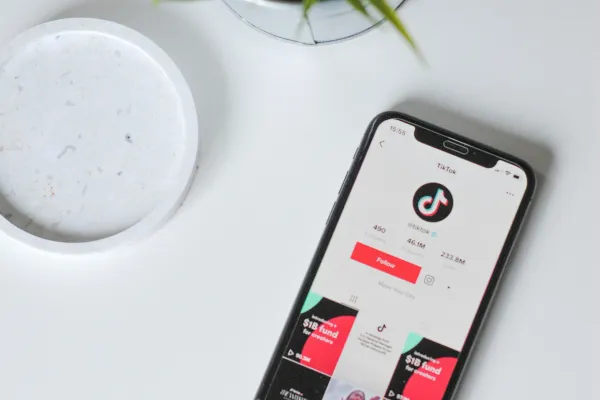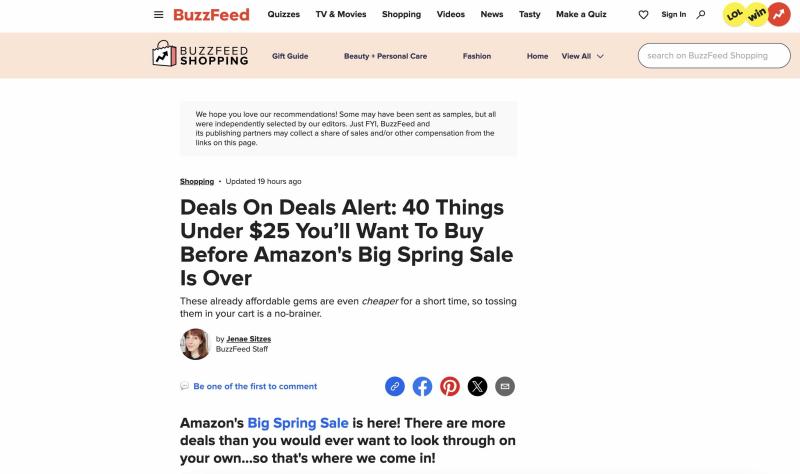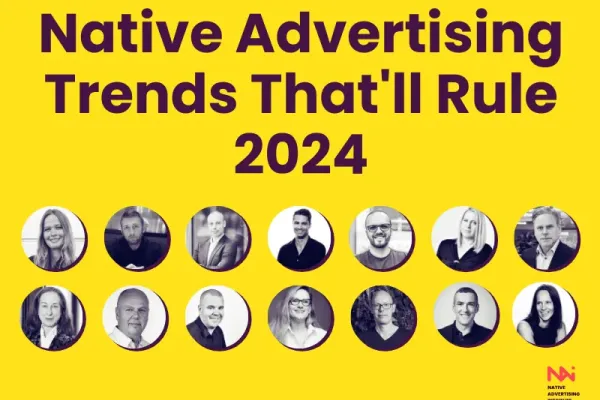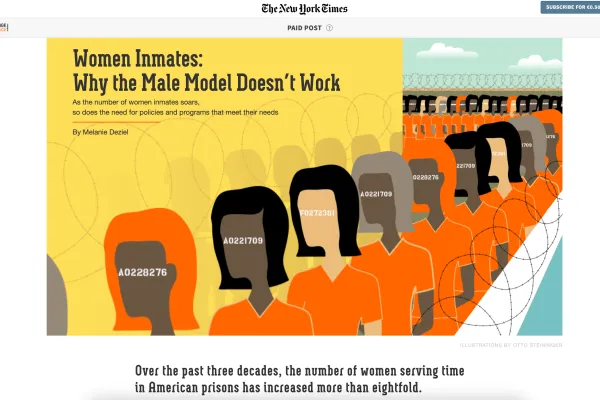
 Details
Details
Today, perhaps more than ever before, user experience reigns supreme when it comes to digital marketing, and while native advertising has evolved greatly since its early days, it has kept true to its core principle of it being:
A form of paid advertising that matches the look, feel, and function of the media it appears on.
In this quick-guide, we’ll take a closer look at the fundamental principle underlying native advertising: the inherent "in-feed" nature of native ads.
What Is Meant by In-Feed Native Ads?
In-feed native ads, also known as 'in-stream native advertising', integrates branded content seamlessly within a publisher's feed, offering users sponsored material alongside editorial “organic” content.
The fundamental principles guiding in-feed native ads are:
- Integration with User Experience: In-feed native ads are seamlessly integrated into the user experience, ensuring they blend harmoniously with the surrounding content.
- Format Compatibility: In-feed native ads match the platform and appearance of the publisher's content, ensuring a cohesive and natural flow.
- Transparency: Prominent disclosure labels such as "Sponsored" or "Promoted" distinguish native ads from organic content, maintaining transparency.
READ MORE: Get to Know the Different Types of Native Advertising
How Has In-Feed Native Ads Evolved Through the Years?
Initially embraced by social media giants like Facebook, Twitter, and LinkedIn, in-feed native ads gained traction within the social media landscape, particularly with the rise of the 'infinite scroll' format.
This format, characterized by endless content presentation, provided an ideal environment for seamless ad integration.
As mobile usage surged, publishers also adopted the 'feed' format to deliver content, recognizing its effectiveness in engaging users. Notable publishers, including Forbes, Gawker, and Yahoo, embraced responsive design to bring the 'feed' format to their mobile platforms.
Today, a long list of publishers offer native ads and advertorials, amongst them some of the most celebrated media outlets in the world, including The New York Times, BBC, and The Washington Post.
READ MORE: How to Spot Native Advertising
What's the Difference Between In-Feed Native Advertising and Banner Display Ads?
In-feed native advertising offers multiple advantages over traditional banner display ads, particularly in enhancing user experience and driving engagement:
- Non-disruptive: Unlike intrusive banner ads, in-feed native ads seamlessly blend with content, preserving the user experience.
- Enhanced Engagement: By integrating branded content within the feed, these ads experience higher engagement rates compared to conventional formats.
- Content Amplification: Brands can leverage in-feed native ads to amplify their content reach, driving traffic to their branded content or landing pages.
READ MORE: 5 Steps to Increase Reach and Engagement of Your Content with Paid Distribution
What Types of In-Feed Native Ads Exist Today?
The Interactive Advertising Bureau (IAB) categorizes in-feed native ads into two general forms:
- In-Feed Summaries: These provide a snapshot of sponsored content produced collaboratively by the publisher's editorial team and the brand.
- Off-Site Redirects: Static image or video in-feed ads may direct users off-site to the brand's page for further engagement.
READ MORE: 8 Essential Visual Techniques for Native Advertising

An example of an off-site redirect type of native ad. Credit: BuzzFeed
Examples of In-Feed Native Ads
So how do in-feed native ads look in the real world? Let's explore some real-world examples of in-feed native advertising in action:
BuzzFeed's Sponsored Posts
BuzzFeed was one of the pioneers of native ads and continues to integrate sponsored content within its feed, ensuring it aligns with the platform's engaging and shareable style.
Brands like Tasty or Walmart often leverage BuzzFeed's reach to showcase their products in a native format.
Instagram Sponsored Stories
Instagram's sponsored stories appear organically within users' feeds, ensuring they blend seamlessly with user-generated content. Brands can leverage these stories to reach a broader audience while maintaining the platform's visual aesthetic.
Twitter (now know as X) Promoted Tweets
Promoted tweets appear naturally within users' Twitter feeds, allowing brands to engage with their target audience in a non-intrusive manner. By aligning with trending topics or relevant hashtags, brands can maximize the impact of their promoted tweets.
LinkedIn Sponsored Content
LinkedIn's sponsored content appears within users' feeds, providing valuable insights, thought leadership pieces, or product promotions. Brands can target specific professional demographics to ensure their content resonates with the right audience.
TikTok Sponsored Content
TikTok integrates sponsored content seamlessly within users' feeds, offering brands a platform to showcase their products or services through engaging and entertaining videos. With TikTok's vast user base, brands can achieve significant visibility and engagement.
Facebook Native Ads
Facebook's native ads appear within users' feeds, mirroring the format and style of organic posts. These ads enable brands to connect with their target audience in a non-disruptive manner, fostering higher engagement and interaction.
What Does the Future Hold For In-Feed Native Advertising?
With its ability to seamlessly integrate branded content into the user experience, in-feed native ads represent a powerful tool for brands seeking to connect with their target audience authentically.
As brands continue to prioritize content strategy and user experience, the native advertising industry as a whole appears poised for continued growth and innovation. The future of in-feed native ads will likely be driven by a series of underlying trends:
- Continued rise of video content: With the increasing popularity of video content across social media platforms, we anticipate an even greater uptick in the use of video in-feed native ads.
- Personalization & targeting: In-feed native advertising will continue to evolve towards greater personalization and targeting capabilities.
- New players, new opportunities: As new social media platforms and digital channels emerge, in-feed native ads will adapt to these evolving landscapes. Platforms like TikTok have taken the social media world by storm, and there will be new players alongside TikTok taking center stage in the coming years.
- Regulatory considerations: With increasing scrutiny on data privacy and consumer protection, in-feed native advertising will face regulatory challenges and ethical considerations. Publishers and brands alike will have to find ways to adhere to new regulatory standards on one hand and new best practices for ad creatives on the other hand.
READ MORE: The Biggest Native Ads Trends in 2024




